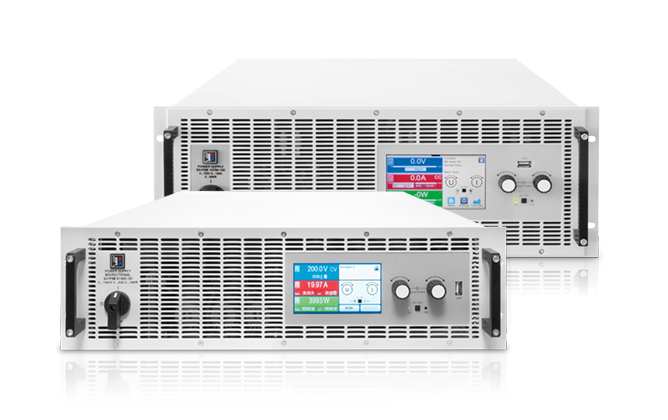Choosing the Ideal Programmable DC Power Supply: Key Features to Consider

When purchasing a power supply, especially a programmable DC power supply, it is critical to understand and consider the power supply’s various features and specifications. DC programmable power supplies are standard in many areas, including research and development, manufacturing tests, quality control labs or process-control systems. Overlooking key features can lead to costly errors, project delays, or even the need to replace the power supply completely.
This blog post, will review the essential features and specifications to look for in DC programmable power supplies. These considerations will ensure you pick the best instrument for your needs and avoid unplanned costs and delays.
Understanding power, voltage and current ratings
The primary consideration when choosing programmable DC power supplies is the power envelope, which ensures the supply has enough voltage and current output. You should select a supply with a 10% to 20% excess capacity over the maximum power required for your device-under-test (DUT) and load circuit. This excess capacity provides a safety margin in case of any unexpected load condition. Examples include dynamic load changes such as startup surges or, sudden demand increase, overheating, or increased wear and tear.
Futureproofing is also essential. You should consider the power requirements of future products to avoid excess capital investments later.
The importance of accuracy in programmable DC power supplies
Accuracy in a power supply is multifaceted. It includes output accuracy, load regulation, stability, standards compliance and calibration traceability.
For high accuracy, remote sensing is vital. This ensures the programmed voltage is fully applied to the load, which will compensate for any voltage drop across test leads. A remote-sensing feature is crucial, especially when the load requires a large current, which can cause significant voltage drops. For calibration purposes, knowing the total accuracy specification of the power supply is key. A high-confidence calibration typically requires an uncertainty ratio of at least 1:4, preferably 1:10.
Output characteristics
When delivering maximum power to the DUT at varying voltages, the output characteristic of the power supply is crucial. There are two types: rectangular and output characteristics.
Autoranging programmable DC power supplies, such as EA Elektro-Automatik power supplies, can deliver full-rated output power from the maximum rated voltage down to a fraction of that voltage. This provides substantial savings and versatility compared to rectangular output supplies.
- Starting Range: EA Elektro-Automatik autoranging supplies start at just 160W.
- Upper Range: These solutions can extend through to 480 kW, indicating that EA Elektro-Automatik cater supplies to a broad spectrum of power requirements.
- Voltage Range: True autoranging capability provides full power down to 33% of the rated output voltage. This means that the power supply can deliver full power even at a third of the maximum output voltage.

Waveform generation capabilities
Some testing procedures require the generation of custom power waveforms or the simulation of power sources. While the common solution involves using a function generator alongside the power supply, some programmable DC power supplies come with built-in function generators.
Here are some of the benefits of an internal function generator over an external function generator:
- Ease of test setup by eliminating the need for additional equipment
- Safety and avoiding a low-power signal generator to a high-power instrument
- Cost-effectiveness of limiting the number of pieces of equipment needed
- Dynamic testing of emulating load conditions and a noisy source
User interface and accessibility
A user-friendly interface is essential for efficient monitoring and control. Look for displays with wide viewing angles and intuitively accessed functions. Demonstrations of the user interface help show the product’s ease of programming and troubleshooting.
Parallel outputs for flexibility
Consider power supplies that can safely parallel multiple units if your application requires higher current output. This feature allows for greater flexibility and ensures an even load distribution across the supplies.
Here are some of the rules for paralleling to ensure safety and functionality:
- Share-bus: Up to 64 EA-10000 series power supplies and loads can be connected in parallel using the master-auxiliary bus system.
- Device combination: The system can consist of any combination of units of the same voltage classes and the same type.
- Galvanically isolated share-bus interface: Each device has a galvanically isolated share-bus interface that provides safety by allowing the devices to safely share load requirements.
- Full dynamic range operation: The entire rack can operate at full dynamic range, ensuring that the system can handle dynamic load changes efficiently.
- Control with one device: The entire system can be controlled with a single device, simplifying the management of the parallel system.
These rules are designed to ensure that when devices are paralleled, they operate safely and effectively, providing the necessary power for a wide range of applications.
Automated control interfaces
For automated test systems, the selected power supply should have the necessary interfaces such as Ethernet, USB, CAN, Profibus and Modbus. This flexibility allows for seamless integration with various control systems, whether a PC or a PLC.
Energy-saving efficiency and regenerative capabilities
Efficiency is a key consideration, especially regarding power factor and energy recovery. Power supplies with regenerative energy recovery, such as the EA-PSB bidirectional DC power supply or the ELR regenerative DC electronic load, can significantly reduce utility costs and cooling requirements.
Also, a bidirectional programmable power supply can operate as both a power supply and an electronic load, potentially reducing the need for additional equipment.

Futureproofing your power supplies
When investing in power supplies, consider the longevity of your supplies and your space’s future requirements. In rapidly evolving industries such as renewable energy, selecting supplies that can adapt to changing testing needs is crucial. Modular systems offer the flexibility to upgrade as necessary.
In Conclusion
Selecting the right programmable DC power supply requires careful consideration of various specifications and features. You can make a wise investment that meets your testing and operational needs when you understand your future needs in terms of:
- Accuracy requirements
- Output characteristics
- Noise levels
- Protection features
- User interface
- Flexibility
- Control interfaces
- Efficiency
- Input power range
- Space requirements
- Futureproofing considerations
The extensive range of EA Elektro-Automatik power supplies can provide you with a wide variety of choices for your specific applications.For more information, read the full app note, Make a Wise Choice for your Next DC Programmable Power Supply.
Contact our team for more information or to request a quote on EA 10000 Series power supplies or Electronic Load test equipment.


